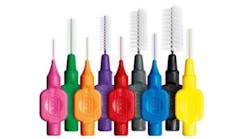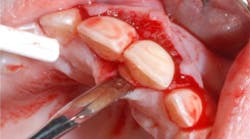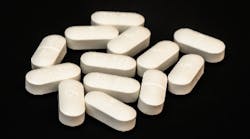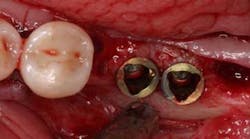The Canary System can detect caries beneath opaque sealants
Quantum Dental Technologies (QDT) announced today that The Canary System™ can accurately detect caries beneath opaque dental sealants. The findings will be presented during at the International Association of Dental Research (IADR) General Session in Seattle, Washington, March 20-23.
RELATED |VIDEO: Dr. Stephen Abrams discusses applications of the Canary caries detection system
RELATED |Quantum Dental Technologies introduces caries detection device to USA dental market
“Dental sealants are an excellent preventive tool for treating pits and fissures in posterior teeth,” said Dr. Stephen Abrams, CEO of QDT. “They should be part of any dental preventive program. Unfortunately, over time, the bond with the fissure will degrade, allowing the ingress of oral fluids and bacteria which creates the ideal environment for caries to develop. These lesions remain undetected by conventional caries diagnostic tools until they are sufficiently large and have destroyed a large amount of tooth structure.”
The data presented at IADR builds upon the findings QDT announced at the IADR in Iguacu Falls in Brazil in June 2012, evidencing the role The Canary System can play in effectively detecting caries beneath 3M™ ESPE™ Clinpro™ Sealant.
The energy conversion technology, PTR-LUM, that powers The Canary System enabled investigators to detect caries beneath 2 mm of Delton®, Embraceä WetBondä, Helioseal® F, and UltraSeal XT® Plusä sealants on 124 potential sound and carious pit/fissure sites on occlusal surfaces of 60 extracted human molars and premolars. Marked pits/fissures were scanned with The Canary System and DIAGNOdent before and after sealant placement. Using polarized light microscopy as the validation tool, the status (carious/noncarious) of each examined pit/fissure was confirmed. The caries detection ability of The Canary system was not affected by any sealant; DIAGNOdent produced a high number of false positive readings.
“Many dental sealants contain opacifying agents that exhibit intrinsic autofluorescence properties, which results in false positives when scanned with DIAGNOdent — a caries detection tool using fluorescence technology. The Canary System uses PTR-LUM technology which can ‘see-through’ opaque sealants giving clinicians a subsurface window and a quantifiable measurement of the status of the enamel crystal structure,” said Dr. Josh Silvertown, chief operating officer at QDT. “We invite dentists and researchers to visit us at Booth #505 at the IADR Meeting.”
The Canary System is powered by PTR-LUM — a revolutionary new tool that can detect, map, and monitor carious lesions on any tooth surface — earlier and more accurately than ever before.
The Canary System is a low-powered, laser-based device that uses a novel combination of heat and light to directly examine the crystal structure of teeth and map areas of tooth decay. The Canary System’s interactive software and printed patient reports engage patients in their own oral health care like never before.
For those who cannot attend the IADR, please visit www.thecanarysystem.com or email [email protected] to request additional information.






